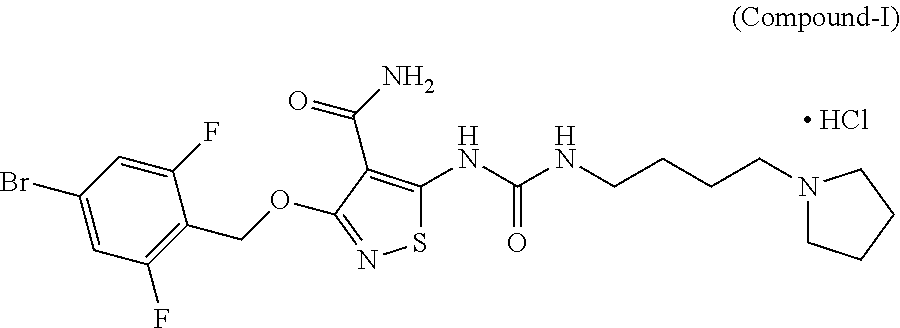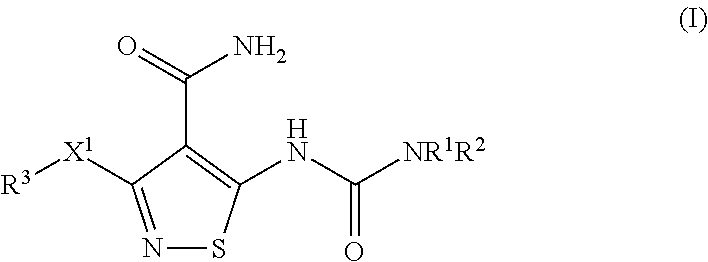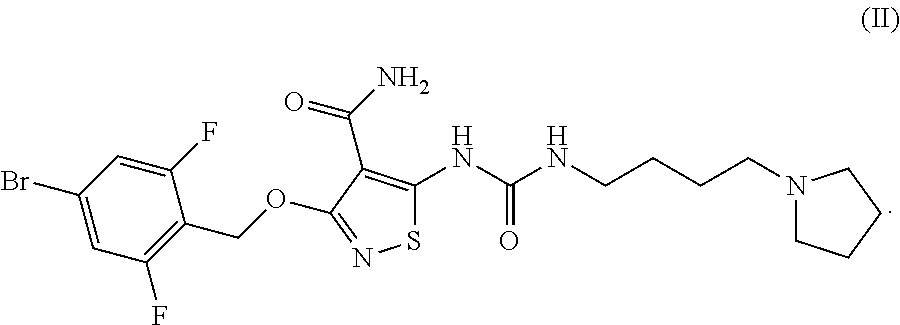Ocular Formulations for Drug-Delivery to the Posterior Segment of the Eye
a technology of ocular formulations and drug delivery, which is applied in the direction of drug compositions, antiparasitic agents, biocides, etc., can solve the problem of limiting the tolerability of topical drops containing actives, and achieve the effect of increasing the bioavailability of actives and reducing exposure to actives
- Summary
- Abstract
- Description
- Claims
- Application Information
AI Technical Summary
Benefits of technology
Problems solved by technology
Method used
Image
Examples
example 1
Primary Pharmacodynamics
[0230]In Vitro Efficacy Pharmacology of Compound-I. Compound-I potently inhibits the tyrosine kinase activity of vascular endothelial growth factor receptor-2 (VEGF-2), as well as a select subset of other proangiogenic RTKs, during various in vitro assays. Specifically, Compound-I compound blocked VEGF-stimulated VEGFR-2 phosphorylation in whole cells along with the proliferation of cultured endothelial cells. Compound-I inhibited recombinant tyrosine kinase activity of VEGFR-2 and FGFR-2 with a 50% inhibitory concentration (IC50) of 10.55 nM (6 ng / mL) and 8.79 nM (5 ng / mL), respectively; and inhibited VEGFR-2 autophosphorylation in intact cells with an IC50=5.27 nM (3 ng / mL). This inhibition was selective versus many other tyrosine kinases, e.g., the VEGFR-2 IC50 was approximately 500× and 1000× lower than those for epidermal growth factor receptor (EGFR) and the insulin receptor (IR) tyrosine kinases, respectively (see Table 2).
[0231]When using a 10-point t...
example 2
Sodium Phosphate-Based Gel Drop
[0236]The ophthalmic benefits of Compound-I in a sodium phosphate-based formulation (listed in Table 6) results from the self-gelling properties of the API in buffers, such as sodium phosphate. Spontaneous formation of a self-forming, thixotropic gel of Compound-I from a clear solution was formed by increasing API concentration in sodium phosphate. This gel initially appeared clear and then demonstrated increased thickness / viscosity at higher API concentrations, as well as becoming increasingly more opaque, i.e., turbid. Once the API concentration in the phosphate buffer reached super-saturated state, insoluble particulates of Compound-I also were observed within the gel.
[0237]Application of a gel with increased viscosity to the surface of the eye increases corneal residence time. Increased corneal residence time in turn facilitates ocular drug absorption. As a result, the intraocular drug concentrations of viscous gels increase in comparison to non-vi...
example 3
Tromethamine-Based Suspension
[0240]Compound-I (about 1 mg / mL to about 10 mg / mL) in a tromethamine-based formulation formed a suspension. The suspension of Compound-I in a tromethamine-based formulation had >95% of the active drug substance in an insoluble form. This characteristic is distinguishable from the soluble or semi-soluble state of Compound-I in the Gel Drop (the Gel Drop (gel) is not an entirely soluble state as concentration of the active agent increases) or in a Cyclodextrin-based formulation. Tromethamine-based formulations of Compound-I showed increased turbidity with increasing active agent concentration. Administering a topical drop of Compound-I suspension to the eye (which is a combination of soluble and insoluble active agent components) was expected to provide unique benefits relevant to both safety / tolerability and efficacy.
[0241]Tromethamine-based suspension of Compound-I was administered to Dutch-Belted rabbits for 4 or 5 consecutive days with three times dail...
PUM
 Login to View More
Login to View More Abstract
Description
Claims
Application Information
 Login to View More
Login to View More - R&D
- Intellectual Property
- Life Sciences
- Materials
- Tech Scout
- Unparalleled Data Quality
- Higher Quality Content
- 60% Fewer Hallucinations
Browse by: Latest US Patents, China's latest patents, Technical Efficacy Thesaurus, Application Domain, Technology Topic, Popular Technical Reports.
© 2025 PatSnap. All rights reserved.Legal|Privacy policy|Modern Slavery Act Transparency Statement|Sitemap|About US| Contact US: help@patsnap.com



